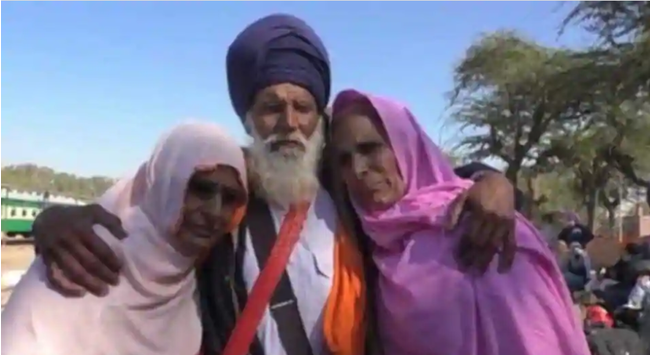As a scholar of religion and someone promoting understanding between faiths, I am an admirer of Guru Nanak Devji, the great founder of the Sikh faith, and see members of his community through his wise and profound teachings. He laid down these three core principles of Sikhism: Naam Japo, remember the Supreme being; Kirat Karo, work righteously; and Vand Chakko, share with others.
His teachings shape followers of the Sikh faith.
One of them is Pawan Bali, who, a few years ago, was attached to my office as my Teaching Assistant (TA) at American University’s School of International Service in Washington DC.
TAs are appointed by the School’s administration at its own discretion, usually for a period of two years. In the circumstances, I have had TAs from different nationalities, mostly American.
When Pawan joined me she was already a distinguished journalist and filmmaker. She has worked with newspapers like the Times of India and the Indian Express. She was also the bureau chief for the Indian news channel CNN IBN. Currently, she is a conflict resolution and communication consultant in Washington DC. For the last decade Pawan has worked passionately on Track II dialogue and peace-building efforts between India and Pakistan.
To meet Pawan is to see the spiritual beauty and compassion of the great South Asian religions. She hails from Kashmir, the land of mystics, poets and powerful women, and is very much a composite of the rich Kashmiri culture that is influenced by the great faiths of South Asia
As she has much of value to say to the world, I will let her speak for herself. AsI worked on this article, I asked Pawan to reflect on our time together. “You have been a mentor, a friend and someone who has led me to view not only Islam, but my own religion, Sikhism, with a new perspective,” she responded.
“With you I have learned to discover the commonalities of faith, and the embracing power of human bonding. Our discussions on Sufi Islam, the teachings of Guru Nanak, my time with you teaching the courses of the World of Islam and Judaism and Islam, all have demonstrated the powerful message of humanity, equality and justice that underlines each faith.
Being a fellow South Asian, we both have shared our disappointment on the growing chasms between faiths in India and Pakistan, our concern for minority communities; we both have shared grief over young girls being brutally raped in Kasur or Kathua; we have shared hope and pride in our common South Asian heritage, our love for music and poetry. All this is, and will always be special to me.
Some of my fond memories with you include the time you said a prayer at Nankana Sahib, when my daughter was born and you sent me a photograph: the time when we walked into a mosque in DC, with our class of American University students, only to discover how divides dissolve across faiths, identities and culture.”
She is also motivated by her personal story:
“I grew up in the sleepy border town of Baramulla in Indian administered Kashmir, where journalism was never a preferred choice for women. I was passionate to resist the set norms for women and prejudices in our society and also, deeply valued the idea of honest journalism. So I quit medical school to pursue journalism.
Years of reporting the conflict of Kashmir, I have witnessed violence at close quarters and the futility of it. I grew up on stories of Partition—within family tales of divide forced by borders. I have witnessed emotional reunions after six decades of separation and desperate efforts of families at communicating with each other across borders. At the banks of Kishenganga, or Jhelum, the river that flows between Indian and Pakistani administered Kashmir, families line up for hours to catch a glimpse of a relative living on the other side. In this time and age, they wrap hand written notes around small rocks and throw them across, sending messages to loved ones. They rest coffins on the banks, while the family on the other side gathers to mourn and condole the departed.
In Kashmir, recently I lost a journalist friend to violence—he took 16 bullets in his chest, while he was on his way to break his Ramzan fast. He clung to a bunch of his newspapers in his last moment. His security officer, also shot dead, held onto a plastic toy he had bought for his two year old daughter on the eve of Eid.
Violence is mindless, heartless. Even as it shakes your core, it is also a reminder that in the face of stark brutality, humanity will triumph. This perhaps, is one belief that drives me towards peace-mongering and activism.
Will Kashmir be solved? Yes, if there is a collective will of the people and setting the political rhetoric aside, our leaders will recognize the value every human life holds.”
I asked her about the thorny subject of India-Pakistan relations:
“I am a strong believer that improved India Pakistan relations offer the panacea to several ills in South Asia. The ties can improve by integrated economic, energy and hydropower cooperation, in addition to regional connectivity with China Pakistan Economic Corridor, One Belt One Road, which can forge interconnectivity and interdependence. Enhance travel: reduce restrictions: more direct air flights—currently there is one, I think. Allow people to travel, visit, religious tourism etc. Be better trading partners: a World Bank estimate says the trade between both countries can be 37 billion dollars. Currently, it is barely at 2 billion.”
Then she falls back to Mirza Ghalib: “Too much to ask: hazaaron khawashein!”
When I asked her for her vision for South Asia, she replied, “My dream for South Asia would be a region where we would forge partnerships, instead of building more walls, bring down the barriers. Right now, South Asia is isolating, pushing people into tiny pockets of religious and state identities. There are the Rohingyas, who belong to no land or the 4 million people in the North East of India who stand the risk of becoming stateless. My vision for South Asia would be a region of greater integration and cooperation, if not entirely borderless, but with more porous borders.
As a mother of a five year old daughter and a three year old son, I also wish for a South Asia where all children have equal access to opportunities and grow fearlessly—where no more eight year olds are raped brutally in Kasur or Kathua.”
Discussing her family life, she said that her marriage to her supportive husband, Sanjiv “did not slow me down, but it put more on my plate—so did kids. It added more love to the heart and responsibility in the head.The work-life balance is challenging, sometimes overwhelming. As co-parents and partners, we both support each others’ dreams of giving back to the society and our efforts to raise kids who learn the values of empathy and kindness.”
As I was concluding this article I received a letter from Pawan which perfectly captures her South Asian vision. She wrote:
“Recently, I read a story about two Muslim sisters from Pakistan who met their Sikh brother for the first time after 71 years.
That is the story of India and Pakistan… just like estranged siblings hoping to one day reconcile their distances. Also, my mom today at breakfast related an incident at the Golden Temple, where she saw a Muslim worshipper offering namaz on the roof top, and a Sikh Nihang stood guarding him. Beautiful.”
She concluded, “I wish I could capture that moment in a photograph.”
The writer is the Ibn Khaldun Chair of Islamic Studies, School of International Service, American University, Washington, DC, and author of Journey into Europe: Islam, Immigration, and Identity


